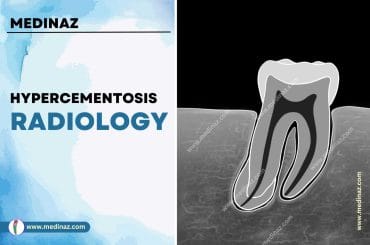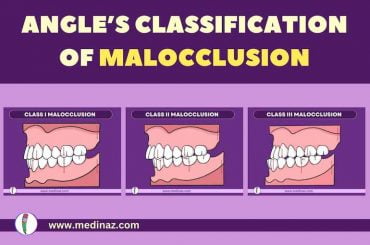Diphtheria Dental Notes for NBDE, NEET MDS preparation and Dental Board Exams
Overview:
- Causative Agent: Corynebacterium diphtheriae, and less commonly C. ulcerans and C. pseudotuberculosis.
- Transmission: Spread through contact with infected individuals or carriers, and in rare cases, contact with farm animals or unpasteurized dairy products.
Epidemiology:
- History: Identified by Klebs in 1883; antitoxin developed by Emil von Behring, Nobel Prize in Medicine, 1901.
- Impact of Vaccination: Significant decline in cases since routine immunization started in the early 20th century.
- Recent Trends: Outbreaks in post-Soviet states during the 1990s, resurgence in populations with inadequate vaccination.
Pathogenesis:
- Mechanism: The bacterium produces a potent exotoxin leading to tissue necrosis, which facilitates further bacterial growth and toxin spread.
Clinical Features:
- Incubation Period: 1 to 5 days.
- Symptoms: Low-grade fever, headache, malaise, anorexia, sore throat, vomiting.
- Signs: Nasal discharge, pharyngeal and tonsillar grayish membrane formation, possible airway obstruction, bull neck due to cervical lymphadenopathy.
- Complications: Myocarditis, neuropathy resembling Guillain-Barré syndrome, cutaneous lesions, systemic toxicity.
Diagnosis:
- Clinical Signs: Distinctive membrane on tonsils and throat; severe cases show airway obstruction.
- Laboratory Confirmation: Culture and PCR analysis; essential for confirmation due to the rarity and potential severity of the disease.
- Confirmatory testing for diphtheria includes culture to identify the bacterial species and the Elek test to confirm diphtheria toxin production. (ref)
Treatment:
- Antitoxin: Critical for neutralizing unbound circulating toxin; must be administered promptly.
- Antibiotics: Erythromycin or penicillin to eradicate bacterial infection and halt toxin production.
- Isolation: Patients considered infectious until three consecutive negative cultures post-treatment.
Prevention:
- Vaccination: Primary prevention through DTP or Tdap vaccine, booster required every 10 years.
Mnemonics for Memorizing Diphtheria Features:
- “CUTERP” Mnemonic for Key Clinical Signs:
- C – Corynebacterium causes it
- U – Uvula and tonsil membrane formation
- T – Toxin production causing tissue necrosis
- E – Exudate that is gray and adherent
- R – Respiratory complications including stridor
- P – Prevention by vaccine and prompt antitoxin
Summary Table for Quick Revision:
| Feature | Details |
| Etiology | Corynebacterium diphtheriae |
| Transmission | Contact with infected individuals/carriers |
| Symptoms | Fever, sore throat, malaise, membrane on tonsils |
| Complications | Myocarditis, airway obstruction, neuropathy |
| Diagnosis | Membrane appearance, culture, PCR |
| Treatment | Antitoxin immediately, antibiotics (erythromycin, penicillin) |
| Prevention | DTP/Tdap vaccine, boosters every 10 years |
Extra Points:
Pharyngeal and Tonsillar Diphtheria:
- Common sites of infection: pharynx and tonsils
- Symptoms:
- Gradual onset of pharyngitis
- Early symptoms: malaise, sore throat, anorexia, low-grade fever
- Formation of bluish-white membrane in 2 to 3 days
- Membrane may extend from tonsils to soft palate
- Membrane color may change to greyish-green or black
- Minimal mucosal erythema surrounding the membrane
- Firmly adherent membrane causing bleeding upon removal
- Extensive membrane formation may lead to respiratory obstruction
- Severe cases: marked edema, lymphadenopathy, “bull neck” appearance, systemic symptoms like prostration, stupor, coma
- Death can occur within 6 to 10 days
Laryngeal Diphtheria:
- Symptoms: fever, hoarseness, barking cough
- Membrane formation can lead to airway obstruction, coma, and death
Anterior Nasal Diphtheria:
- Onset similar to common cold
- Symptoms: mucopurulent nasal discharge, blood-tinged discharge
- White membrane formation on nasal septum
- Usually mild due to poor systemic absorption of toxin
Cutaneous Diphtheria:
- Manifestations: scaling rash, ulcers with clear edges and membrane
- Common in tropics, less severe systemic complications compared to other forms
- Cutaneous cases in the US typically nontoxigenic, but toxigenic cases increasing
Other Rare Sites of Involvement:
- Mucous membranes of conjunctiva, vulvovaginal area, external auditory canal
Check other important Medinaz Visual Dental Notes for your exam
A Visual Learning Platform





